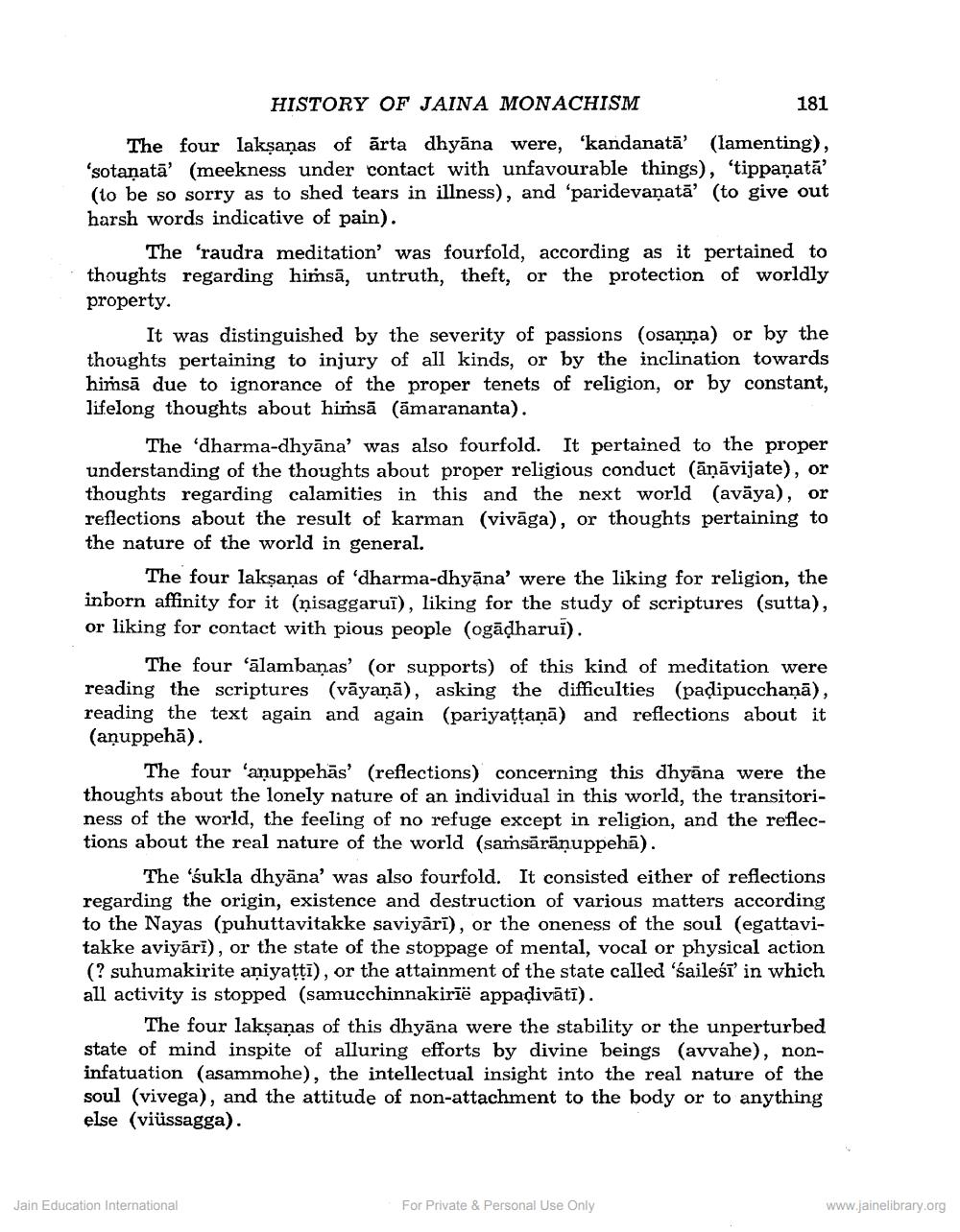________________
HISTORY OF JAINA MONACHISM
The four lakṣaṇas of arta dhyāna were, 'kandanata' (lamenting), 'sotaṇata' (meekness under contact with unfavourable things), 'tippanata' (to be so sorry as to shed tears in illness), and 'paridevaṇata' (to give out harsh words indicative of pain).
181
The 'raudra meditation' was fourfold, according as it pertained to thoughts regarding himsā, untruth, theft, or the protection of worldly property.
It was distinguished by the severity of passions (osanna) or by the thoughts pertaining to injury of all kinds, or by the inclination towards hirmsa due to ignorance of the proper tenets of religion, or by constant, lifelong thoughts about himsā (amarananta).
The 'dharma-dhyana' was also fourfold. It pertained to the proper understanding of the thoughts about proper religious conduct (āṇāvijate), or thoughts regarding calamities in this and the next world (avāya), or reflections about the result of karman (viväga), or thoughts pertaining to the nature of the world in general.
The four lakṣaṇas of 'dharma-dhyana' were the liking for religion, the inborn affinity for it (nisaggarui), liking for the study of scriptures (sutta), or liking for contact with pious people (ogädharui).
The four 'älambanas' (or supports) of this kind of meditation were reading the scriptures (vāyaṇā), asking the difficulties (padipucchaṇā), reading the text again and again (pariyaṭṭanā) and reflections about it (anuppehā).
The four 'anuppehäs' (reflections) concerning this dhyana were the thoughts about the lonely nature of an individual in this world, the transitoriness of the world, the feeling of no refuge except in religion, and the reflections about the real nature of the world (samsäräņuppehä).
The 'sukla dhyana' was also fourfold. It consisted either of reflections regarding the origin, existence and destruction of various matters according to the Nayas (puhuttavitakke saviyārī), or the oneness of the soul (egattavitakke aviyāri), or the state of the stoppage of mental, vocal or physical action (? suhumakirite aniyatți), or the attainment of the state called 'sailesi' in which all activity is stopped (samucchinnakirië appaḍivātī).
The four lakṣaṇas of this dhyana were the stability or the unperturbed state of mind inspite of alluring efforts by divine beings (avvahe), noninfatuation (asammohe), the intellectual insight into the real nature of the soul (vivega), and the attitude of non-attachment to the body or to anything else (viüssagga).
Jain Education International
For Private & Personal Use Only
www.jainelibrary.org




